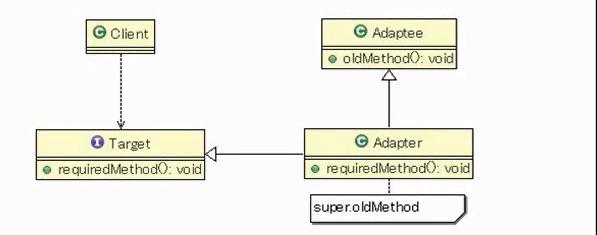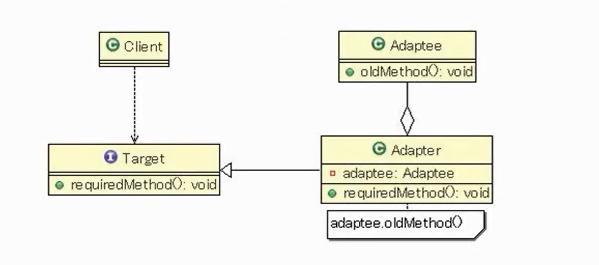适配器模式
1. 什么是适配器模式
Adapter 模式也叫适配器模式,是构造型模式之一,通过 Adapter 模式可以改变已有类(或外部类)的接口形式。
2. 适配器模式应用场景
在大规模的系统开发过程中,我们常常碰到诸如以下这些情况:我们需要实现某些功能,这些功能已有还不太成熟的一个或多个外部组件,如果我们自己重新开发这些功能会花费大量时间;所以很多情况下会选择先暂时使用外部组件,以后再考虑随时替换。但这样一来,会带来一个问题,随着对外部组件库的替换,可能需要对引用该外部组件的源代码进行大面积的修改,因此也极可能引入新的问题等等。如何最大限度的降低修改面呢?
Adapter 模式就是针对这种类似需求而提出来的。
Adapter 模式通过定义一个新的接口(对要实现的功能加以抽象)和一个实现该接口的 Adapter(适配器)类来透明地调用外部组件。这样替换外部组件时,最多只要修改几个 Adapter 类就可以了,其他源代码都不会受到影响。
3. 适配器模式的结构
3.1. 通过继承实现 Adapter

3.2. 通过委让实现 Adapter

4. 代码演示
4.1. 不使用适配器
public class Current {public void use220V() {System.out.println("使用220V电压");}}
Current current = new Current();current.use220V();
4.2. 通过继承实现适配
public class Adapter1 extends Current {public void use18V() {this.use220V();System.out.println("输入220V,输出18V");}}
Adapter1 adapter = new Adapter1();adapter.use18V();
4.3. 通过委让实现适配
public class Adapter2 {private final Current current;public Adapter2(Current current) {this.current = current;}public void use18V() {this.current.use220V();System.out.println("输入220V,输出18V");}}
Adapter2 adapter = new Adapter2(new Current());adapter.use18V();

